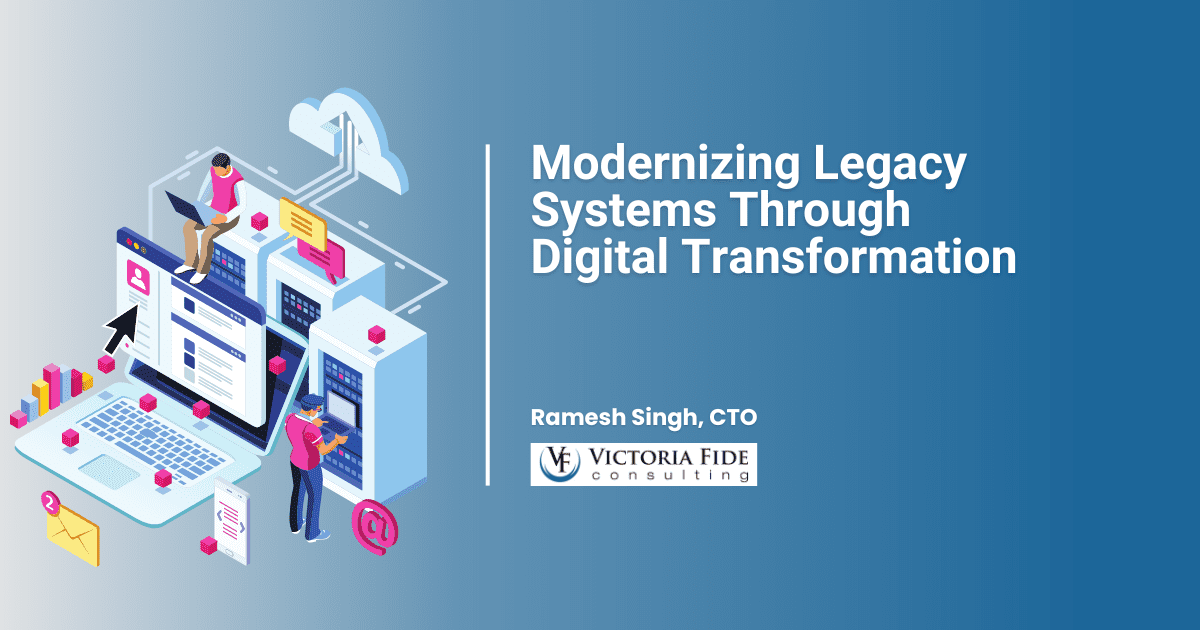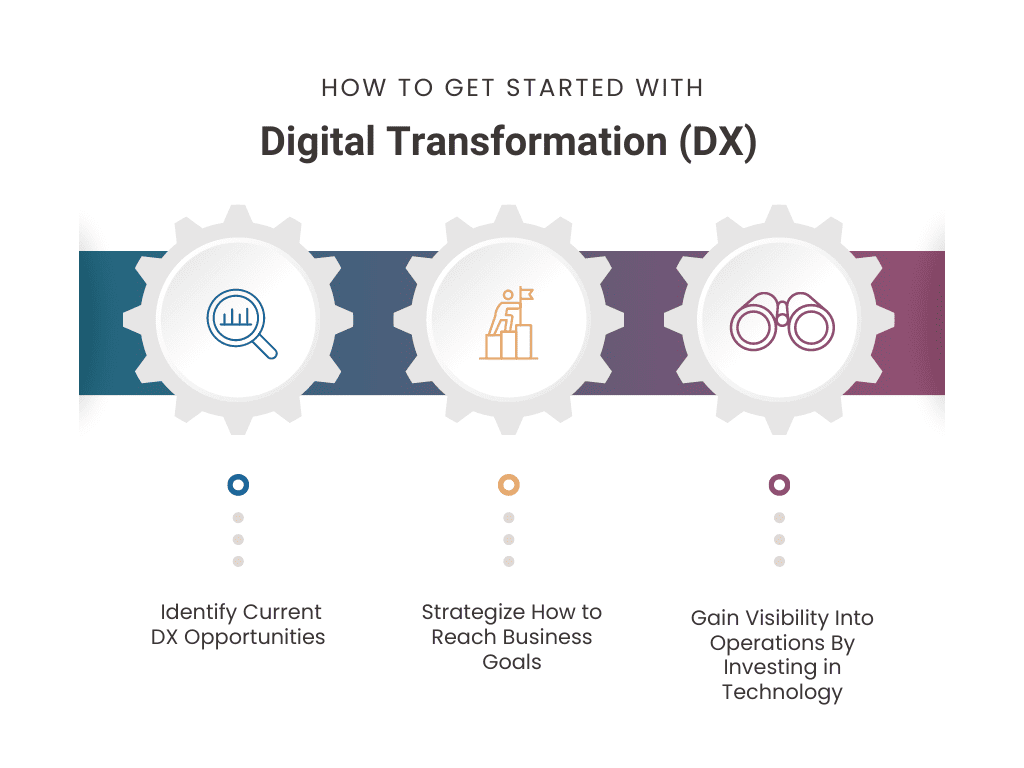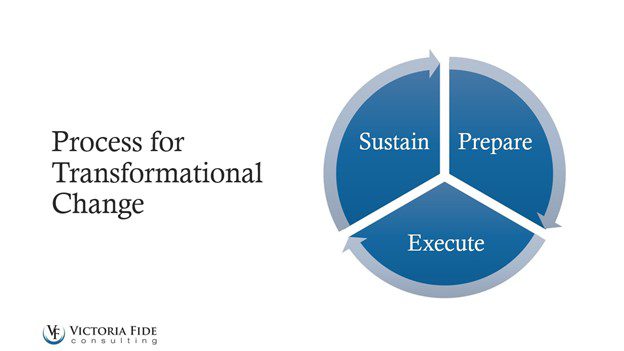
As technology rapidly changes and advances, many companies are stuck with outdated legacy systems. These systems can be costly and difficult to maintain, but they may also contain valuable data that is essential to the company. To stay competitive, it is important for companies to think about modernizing legacy systems through a digital transformation. This can be a complex and daunting task, but there are many ways to approach it. By understanding the challenges and opportunities of digital transformation, technology leaders can help their companies make the transition successfully.
Table of Contents
What Is Digital Transformation?
Digital transformation is an innovative process of leveraging technology to create new business models, improve customer experience, and drive operational excellence. It is the integration of digital technology into all areas of a business, which fundamentally changes how companies operate and how they interact with their customers.
Digital transformation can bring many benefits, such as improved efficiency and cost savings, increased customer engagement through personalization, automation for faster decision making, and greater flexibility. Additionally, digital transformation can be used to develop new capabilities that can help differentiate a company from its competitors in today’s digital market. As businesses focus more on digital transformation initiatives, it will be important to monitor progress closely to ensure that the desired outcomes are being achieved effectively.
What Are the Risks of Not Modernizing Legacy Systems?
There are significant risks for businesses that do not digitize. Here are the top 5 risks of not modernizing legacy systems:
- Competitive disadvantage: In today’s digital age, businesses that do not embrace technology risk falling behind competitors who have implemented digital strategies and technologies to drive growth, innovation, and efficiency.
- Missed opportunities for cost savings: Digitization can help businesses optimize their operations and reduce costs through automation, process streamlining, and data-driven insights. Failing to digitize means missing out on these potential cost savings.
- Poor customer engagement and experience: Customers increasingly expect seamless digital experiences across all channels, from online shopping to customer support. Non-digitized businesses may struggle to meet these expectations, leading to decreased customer satisfaction and loyalty.
- Difficulty attracting and retaining top talent: Younger generations of workers expect modern technology in the workplace as a basic requirement. Businesses that fail to provide it risk losing out on top talent who seek out more digitally advanced organizations.
- Increased vulnerability to security breaches: Non-digitized businesses may be more vulnerable to cyber attacks and data loss due to outdated security measures or lack of system updates. This can lead not only to financial losses but also reputational damage that can be difficult to recover from.
Overall, failing to modernize legacy systems can have serious consequences for a business’s long-term success and viability in today’s increasingly digital world.
What Are the Benefits of Digitizing Your Business?
Digitizing your business provides the opportunity to greatly reduce overhead costs by streamlining operations and doing away with the need for physical assets. It also increases scalability, allowing your business to cater to a much wider customer base with minimal additional investments. Digitization of your business can also drive innovation and help create new offerings that would be impossible with the traditional brick-and-mortar model. Finally, it enables you to access a wealth of reliable data analytics that can inform smarter decision-making regarding resource allocation and marketing strategies. In short, digitizing your business allows you to significantly reduce costs while simultaneously increasing efficiency, competitiveness and profitability.
How to Get Started with Digital Transformation

Organizations that want to get started with digital transformation should start by analyzing their current digital environment and identifying areas for improvement. Once potential areas are identified, businesses can then strategize how best to tackle each issue with the aim of enhancing customer engagement, engaging employees in more meaningful ways, or improving internal operations. Businesses should also consider investing in technology so they can gain visibility into the operations and make sure projects stay on track. By proactively carrying out these steps, companies will be able to prepare themselves for a successful journey into this quickly evolving world of digital transformation.
At Victoria Fide, we have developed a process for assessing your preparedness to help you become better prepared to make change positive.
Take an Evolutionary View Toward Legacy Modernization
Business outcomes should always take priority, not systems – modern or legacy. Even if the goal is to create a modern system, we should remember that today’s modern system is tomorrow’s legacy. This should be the lens through which all investment decisions should be made.
“Today’s modern system is tomorrow’s legacy.”
Ramesh Singh, CTO Victoria Fide
Taking an evolutionary view toward modernizing legacy systems can provide benefits to organizations that are struggling with transformation efforts. In this approach, rather than completely overhauling a core system, the process is broken down into smaller pieces, allowing for piecemeal and iterative development leveraging existing skills, tools, and architecture. This facilitates quick wins on small improvements while also providing an environment that can adapt and scale as investments in technology infrastructure increase. Ultimately, this approach allows for better continued support of existing processes while allowing for the embracing of new technologies at a pace that works best for your organization’s budget and capabilities. Adopting an evolutionary approach to legacy modernization will ensure that technology spending is distributed wisely.
If you are considering implementing a transformational technology project to update your outdated systems and would like more information about our approach or want to explore how we can assist you, please don’t hesitate to contact us at info@victoriafide.com.

About the Author
Ramesh Singh is the Chief Technology Officer of Victoria Fide. He is passionate about how technology has been changing the way businesses operate and has helped companies set a vision for the use of technology to meet their short and long-term needs. No problem is too complex or unsolvable for Ramesh. He believes that ‘every problem has a solution; you just need to discover it.’
